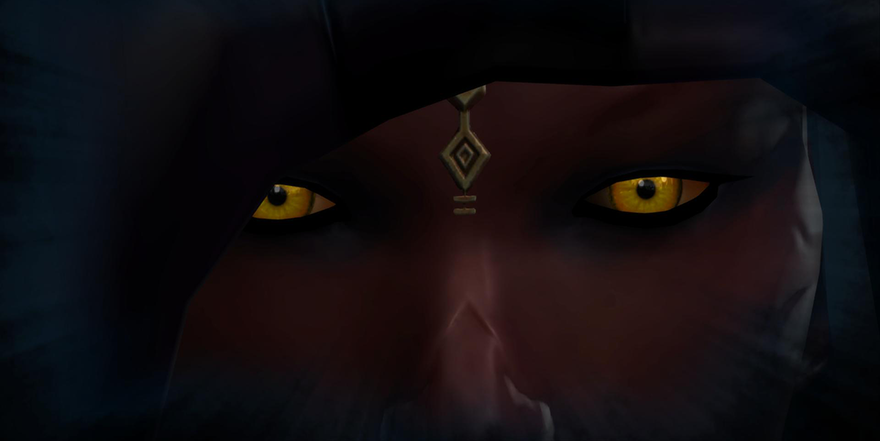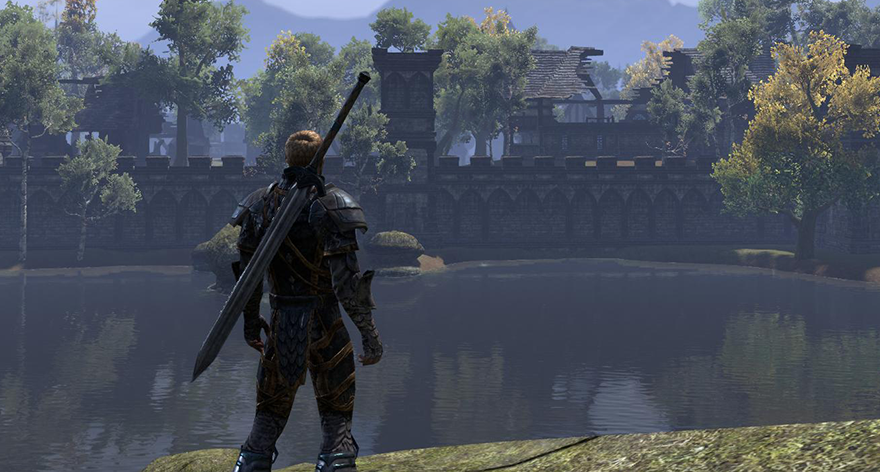
I think it’s all but obvious that Elder Scrolls Online and Star Wars: The Old Republic are enriched with lore. The Star Wars universe, despite being mostly “legends,” is full of interesting places and exciting character twists. And even if you’ve only played one Elder Scrolls game, you can tell that there is something deeper beyond the surface.
But when you compare the two prominent MMOs running on those intellectual properties, you will see a vast difference in the way that the stories are presented to you.
The ESO form of storytelling involves a lot of static scenes with talking heads, while SWTOR takes a more cinematic approach. Which is more immersive, and what can one learn from the other? What would a ESO/SWTOR lovechild look like? Let’s take a moment to explore them both.

Quest givers
Both ESO and SWTOR are fully voiced, and both ZeniMax and BioWare are very proud of that fact. Of course, forty percent of ESO is voiced by Steve Blum (that might be a slight exaggeration), but it doesn’t change the fact that everything is voiced. It’s an amazing feat, truly. It’s expensive and time-consuming to get writers to piece together strings upon strings of dialogue and then to record it line by line with appropriate emotion and phrasing.
And much as SWTOR likes to proclaim that it was the first fully voiced MMORPG, that’s not the truth for two reasons. First, DC Universe Online was released almost 12 months before SWTOR, and it was fully voiced. And SWTOR cheats a lot. Not only are some of the quests just automatically given to you without a word, but some of the quests come from a terminal or are delivered by NPCs in a made up language. Anyone who has spent any time doing the side quests in SWTOR knows that much of that is just recycled dialogue.
There are some cheats in ESO, too. Some quests don’t require an NPC to start the quest, and some quests are just markers on the map. But for the most part, ESO is voiced. Every little quest has its own charming NPC talking at you, even if that NPC is a disembodied skull. But they are talking at you. Your character doesn’t say a word… ever. In contrast, each of the eight major classes in SWTOR has both a female and a male voice actor.
However, just because your character doesn’t talk doesn’t mean that he or she doesn’t make choices.

The camera
When we talk about cinematic cutscenes, we have to mention the camera. The first delivery of SWTOR gave us some camera movement, but even the team making SWTOR will admit that the storytelling presented in the camera movement was limited when the game launched. However, if we examine the latest expansion, we can see that the camera isn’t just there to frame the character talking; it’s also part of the storytelling. A wide sweeping shot might express the vastness of the Emperor’s power, or a sudden zoom in might indicate a powerful precise stab with a lightsaber. The cinematographers have really stepped up the storytelling a notch in the latest expansion and subsequent chapters.
You might not think that I will have anything positive to say about the ESO camera. But that’d be wrong. I have to remember that we are talking about a choice made by the developers. I have to ask, “Why did the ESO designers decide to make most of the quest NPC interactions static?” And I think I have an answer. Beyond wanting to make it like the previous Elder Scrolls games, there is something to be said about maintaining the first-person perspective. It can give the player a greater sense of ownership in the scene. It’s no longer an avatar speaking for the player; it is the player himself or herself doing the speaking.
This ownership of the scene is most evident in the instanced cutscenes with the Prophet. In these scenes, the player controls the camera angle, perspective, and location. The scene really belongs to the player. If you want to spend more time staring down one NPC or another, that’s your choice. However, it’s far from cinematic.

World immersion
In fact, much of the storytelling in ESO is about your choices outside of the dialogue scenes. Whom you chose to help and how much time you spend in one area or another both have an effect on the world around you. I believe that is the strongest storytelling device that ESO has over SWTOR. There is still quite a bit of complaining because group questing is generally difficult in ESO, but from a storytelling perspective, ESO’s phasing tech is miles beyond the green and red doors of SWTOR. When your story is done or when it hits a milestone, the world around you literally changes, and there is no going back unless you roll a new character.
Things change in SWTOR; there are some hard-hitting choices to be made, but ultimately, everything in the world stays the same. This more than anything can pull a player out of the great stories of SWTOR. The fact that I can’t go back to places like Port Nowhere or Asylum really make immersion difficult for me and many other players.
Who wins the storytelling battle?
When pitting these two giants against each other, I say there isn’t a clear winner. There isn’t a clear loser, either. Personally, I like the cinematic storytelling of SWTOR cutscenes, but I love the world changes of ESO. If we were to combine those two pieces of tech, then we would have the ultimate storytelling MMO! But who’s going to spend the time to make that beast? The Witcher MMORPG? Make it happen, CD Projekt Red!
 Traverse the troubled land of Tamriel in the Elder Scrolls Online. Larry Everett will be your guide here in Tamriel Infinium every other week as you explore together the land created by ZeniMax and Bethesda. If you have any burning questions, send them his way via email or via Twitter.
Traverse the troubled land of Tamriel in the Elder Scrolls Online. Larry Everett will be your guide here in Tamriel Infinium every other week as you explore together the land created by ZeniMax and Bethesda. If you have any burning questions, send them his way via email or via Twitter.













